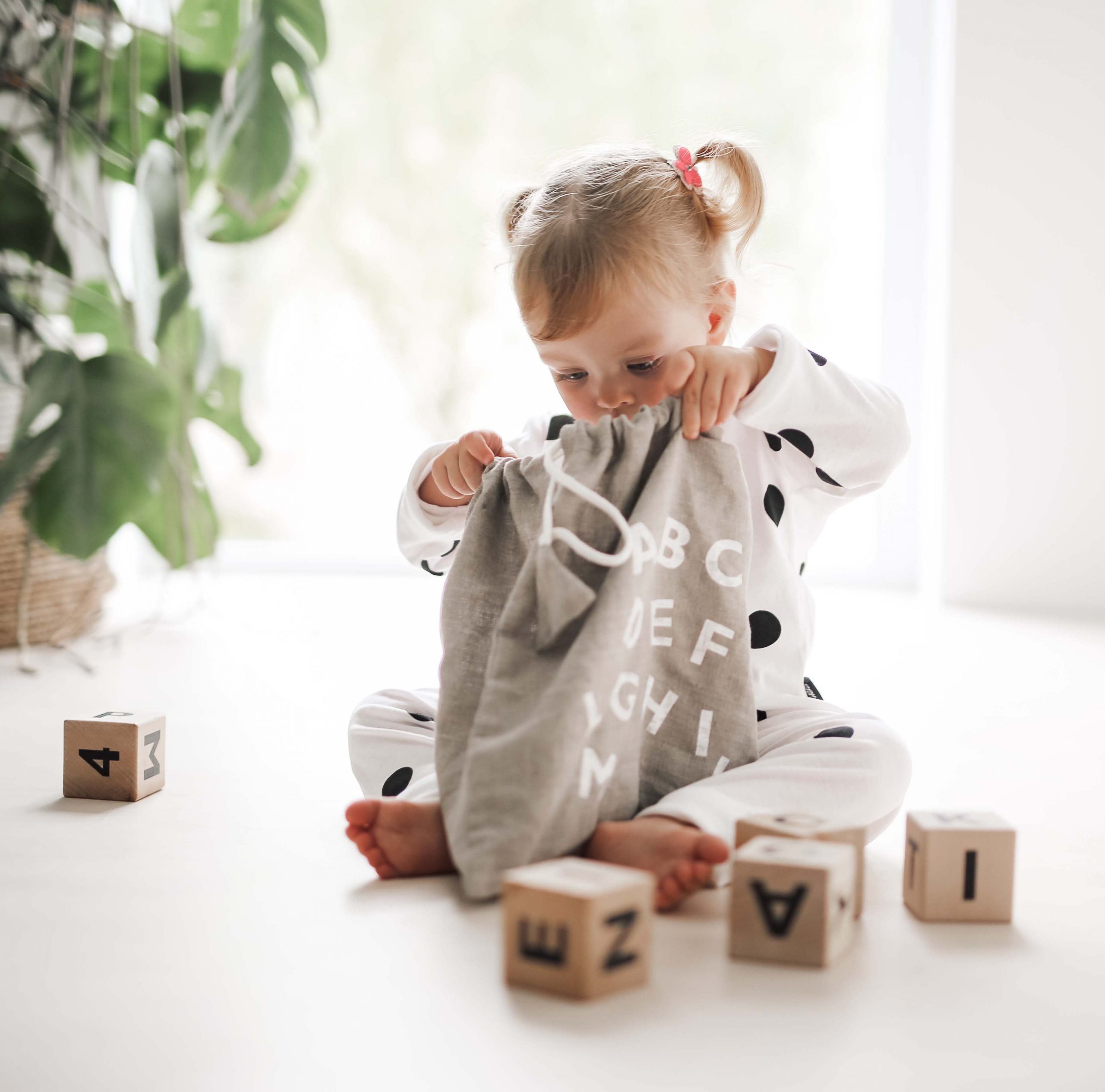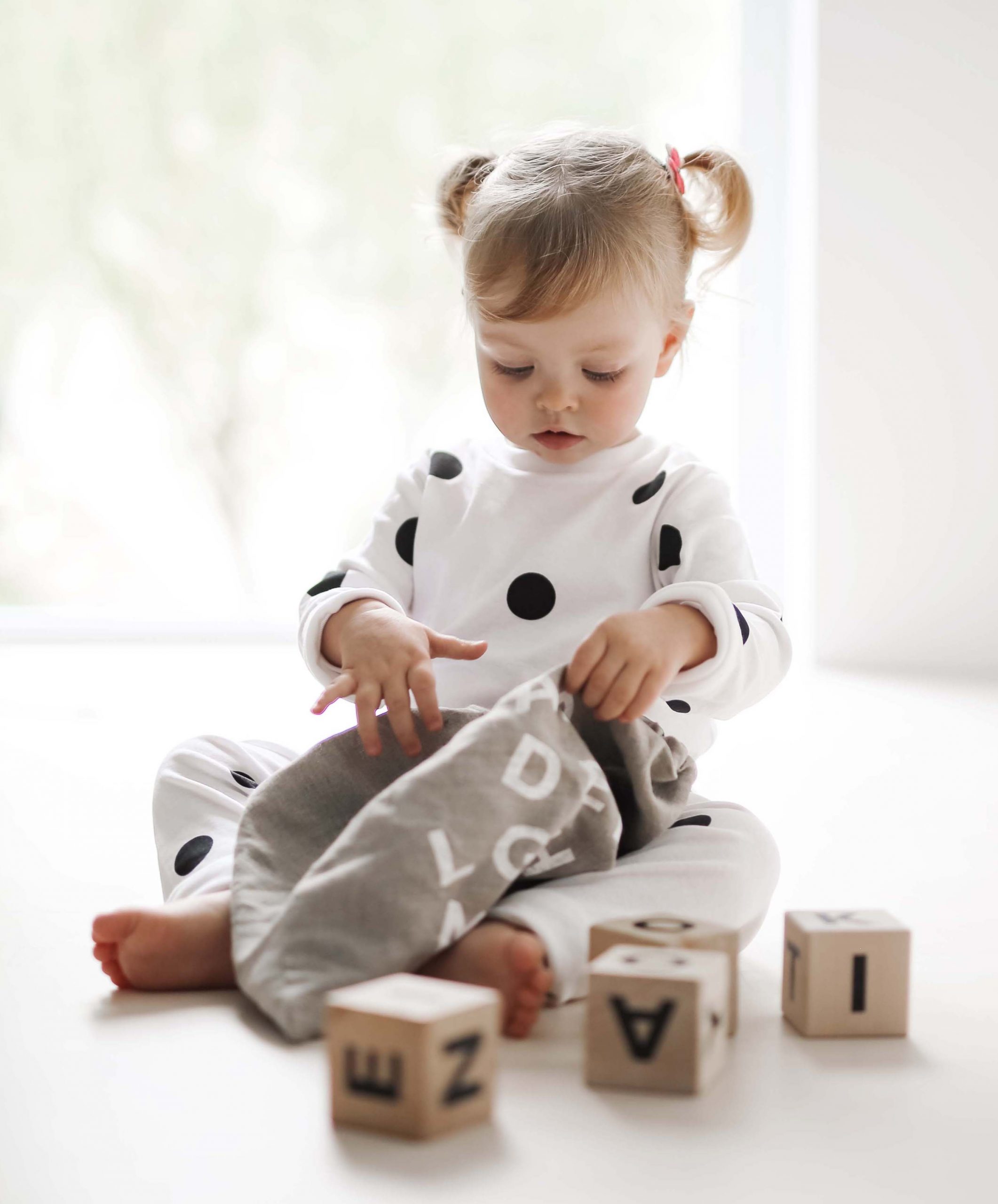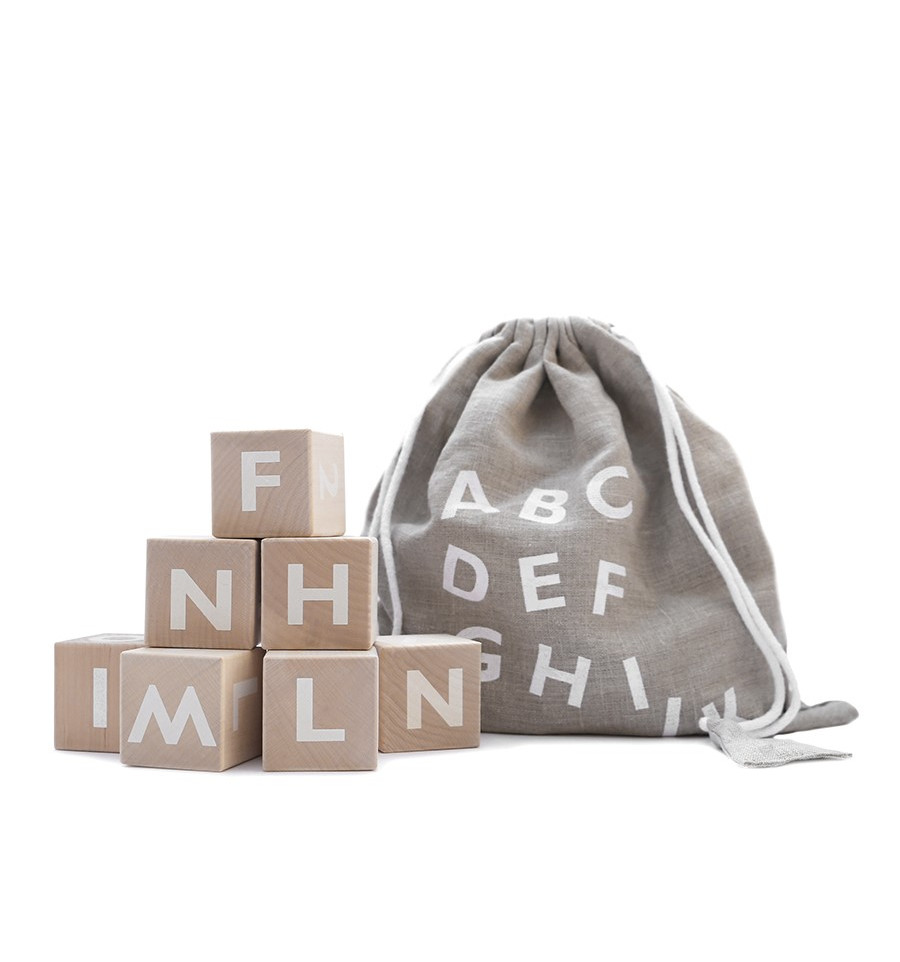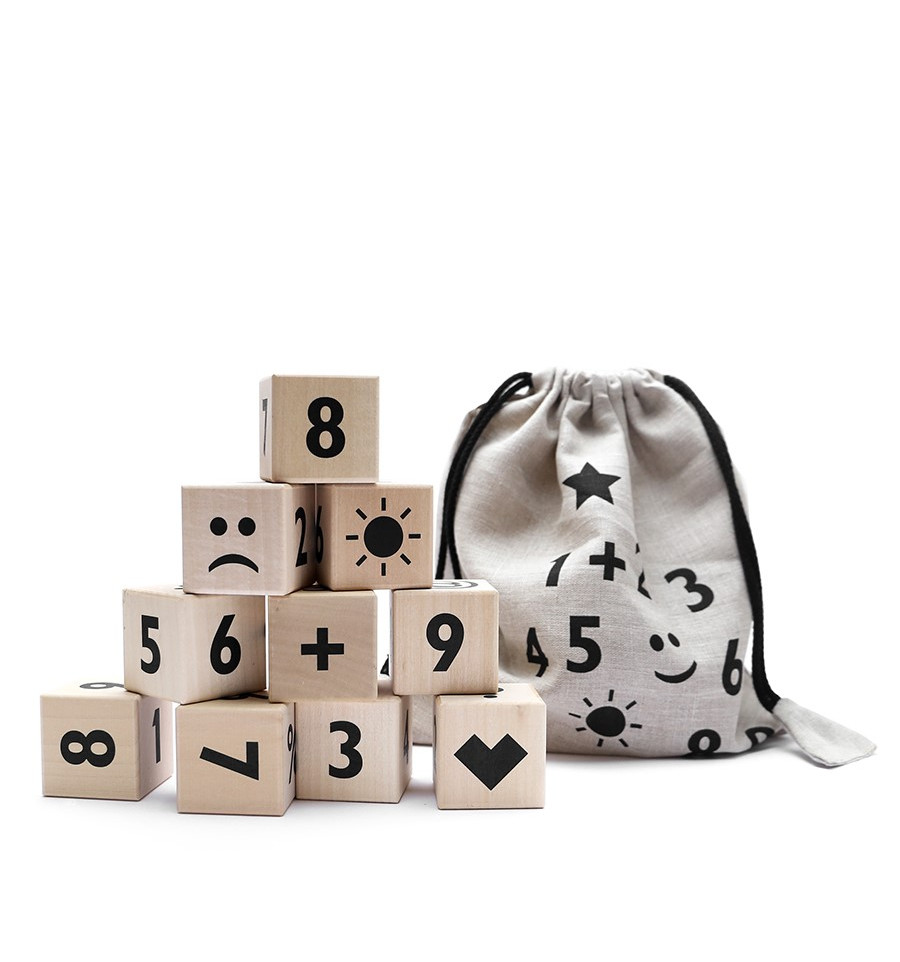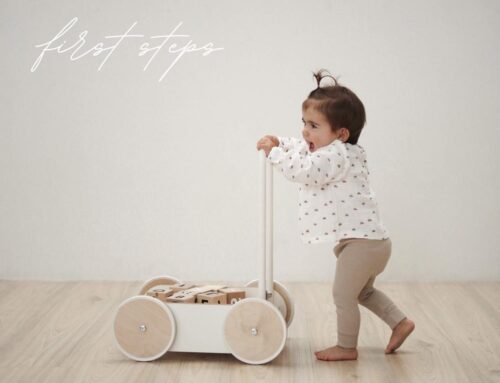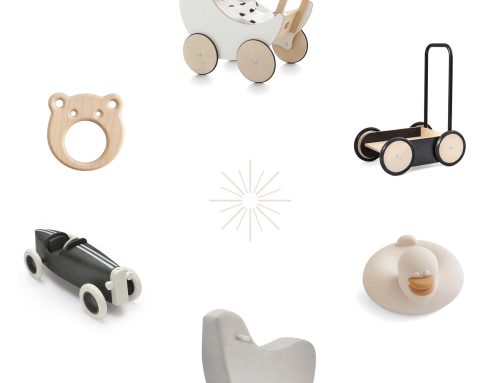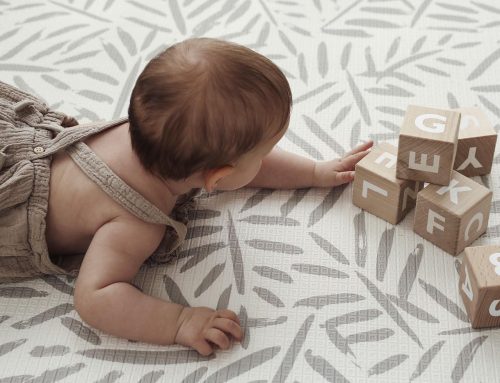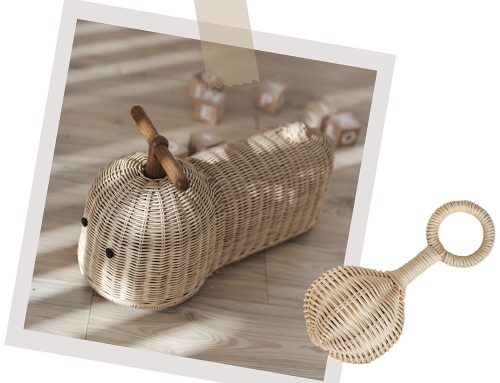An essential part of human life is our ability to recognise objects just by holding them in our hands. This skill is called stereognosis. This handy Greek word describes our three-dimensional (stereo) knowledge (gnosis), that is, our haptic – or tactile – perception.
No wonder our hands have so many nerve endings! A big part of their function is to help us with just that. How many objects can your toddler differentiate only by touch?
Developing stereognostic skills
A mystery bag can help develop this skill while having fun. In this activity, a simple cloth bag filled with a few everyday objects becomes a space of endless exploration and learning. After all, toddlers love surprises!
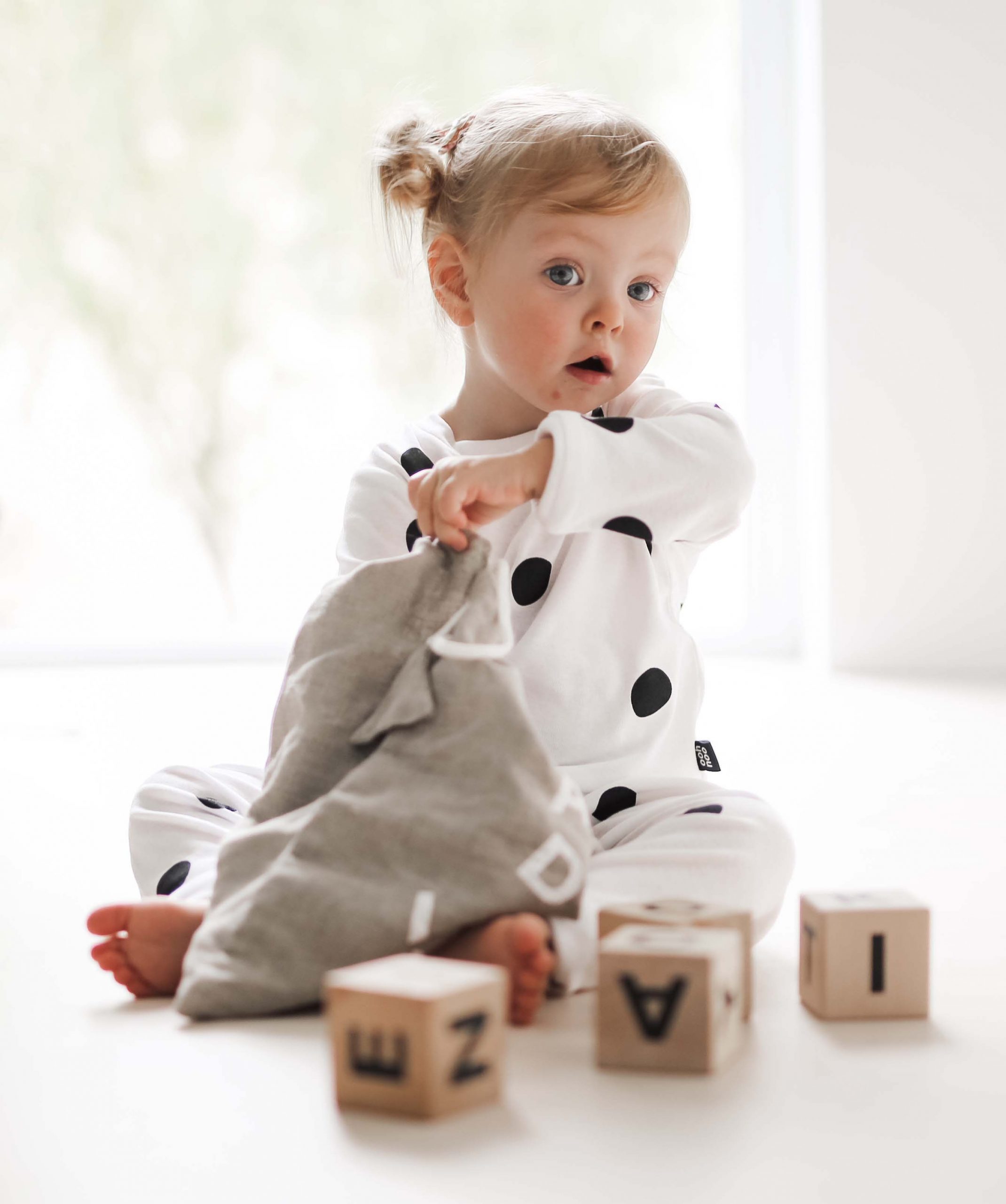
What you need
- A cloth bag that you can’t see into with a drawstring so you can adjust its opening so you or your toddler’s hand can reach inside.
- 5 to 7 simple objects. Enough to provide variety, but not too many so as not to overwhelm your child. Ideas: a wooden block, a spoon, a small ball, a key, a button, a feather. Use simple items that have a clear role in your child’s life. Use your imagination!
- You can even create themed bags according to the season. At the seaside, use a toy shovel, a seashell, a pair of sunnies, and a balloon filled with water. Or fill your bag with fruits: an apple, a banana, a grape, a cherry, an orange.
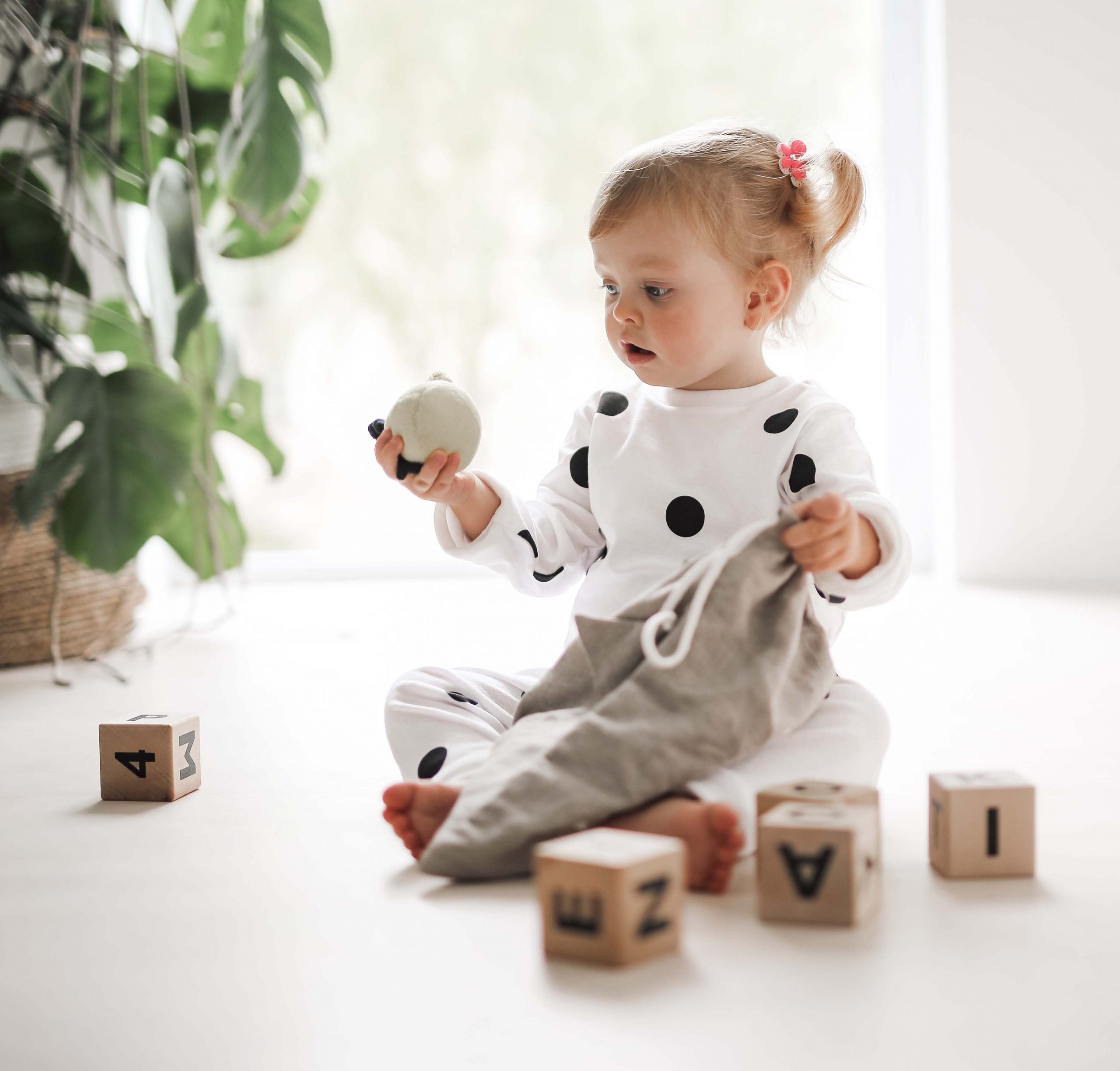
How to play
By adapting this activity to your child’s age, you can revisit it at different stages of development. Below are five variations:
- Stick your hand inside and describe one or more of the following about an object: its characteristics (texture, material), its shape, its purpose. Adjust the number of details according to your child’s age and verbal skills. Use the same level of information for each object. If you reach inside and find a spoon, you might say: “I’m holding something that is cold and made of metal.” OR “It has a long handle.” OR “We use it to eat soup.” Then give your child the bag and ask him or her to find that object and name it.
- Stick your hand inside and say, “I’ve found a metal spoon!” Then pull it out and describe its characteristics together with your child.
- Ask your child to reach inside and name an object she has found.
- Ask your child to find a specific object without first describing it.
- Advanced variation (great for older kids), you can also put two identical items in the bag and ask your child to pull out the matching pairs.
Pay attention to whether your child can name the object while it is still in the bag or only upon seeing the object. With time, the goal is for your child to name it while holding it in the bag, sight unseen.
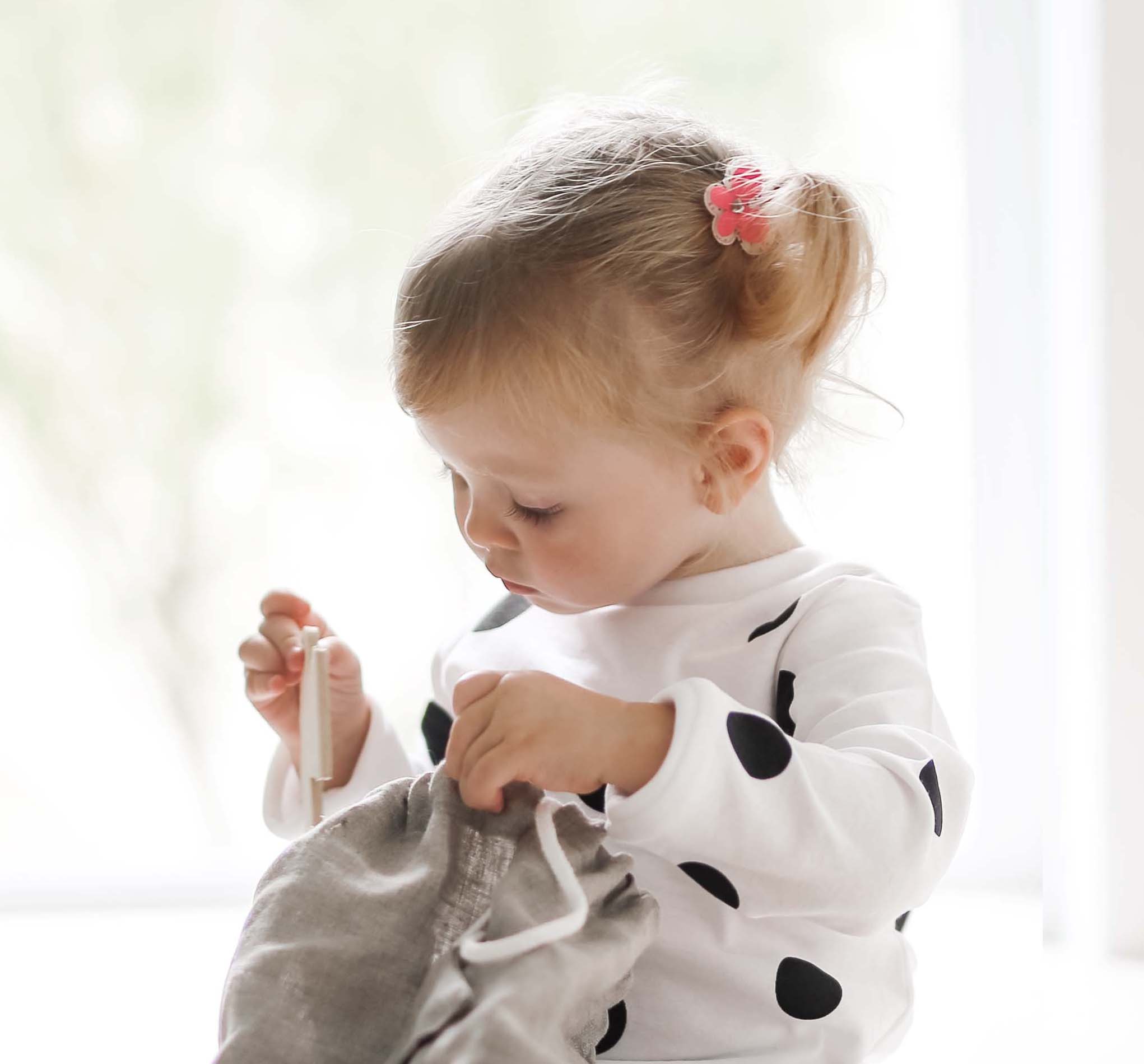
Brain training is fun
You’ll be engaging your toddler in a key learning activity training the right and left sides of the brain to coordinate tactile-perceptual skills with verbal skills. Your toddler will delight in this simple challenge that underlines the wonder of learning through play and opens up one’s proprioceptive and three-dimensional knowledge of the world.
